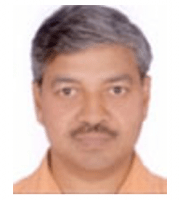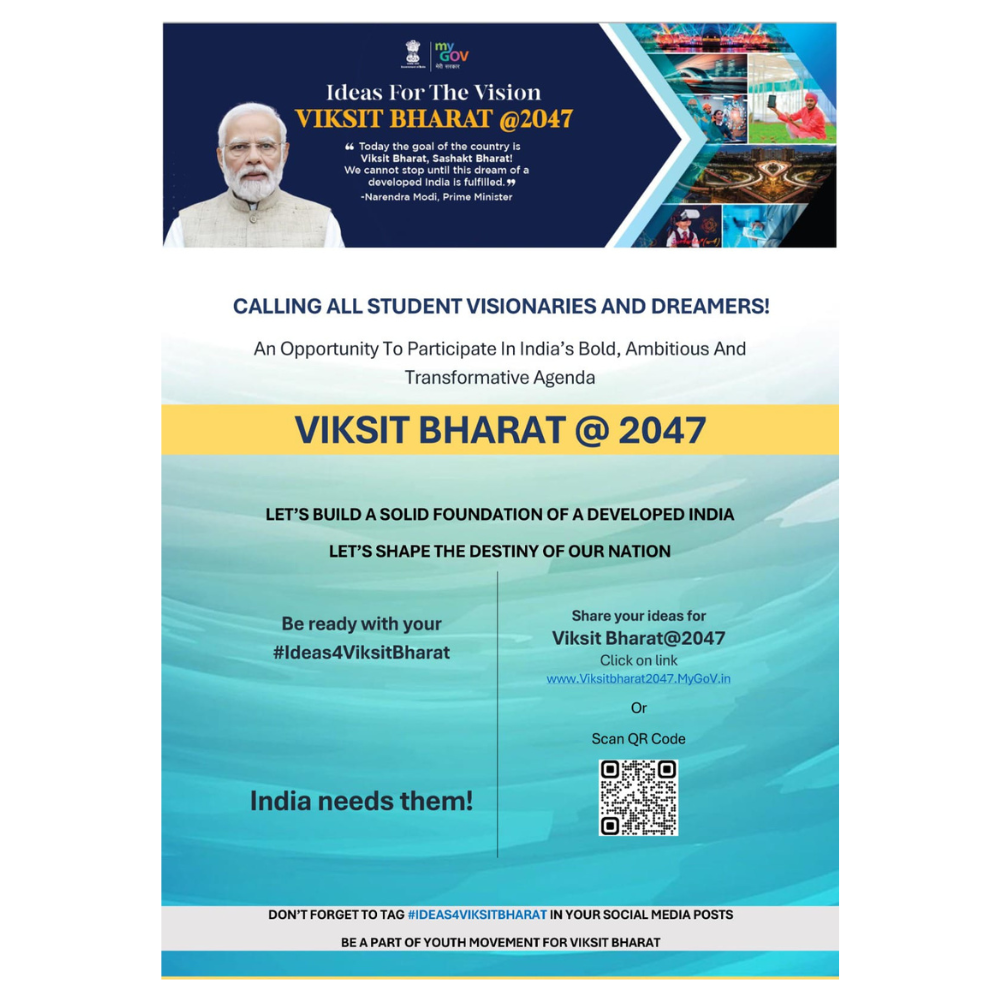
Professor and Head Department of Physics
Dean, School of Physical and Chemical Sciences
- venktesh@cusb.ac.in
- venkaz@gmail.com
Specialization :Nuclear and Astroparticle Physics
Experience :16 Years / Research 23 Years. Dr. Venktesh Singh is a Professor of Physics with interest in teaching nuclear, high energy heavy-ion physics, and astrophysics and current research interest on understanding of low and intermediate energy neutrino and physics beyond the standard model of particle physics. Actively engaged in national and international experimental research collaborations with a team of mentors and students, and in updating knowledge of alumni across all batches passed out from 2020 onwards.
The aim of the Relativistic Heavy Ion Collider (RHIC) program was to discover and quantify the properties of the quark–gluon plasma (QGP). Our experimental results indicated strong collective behavior that was only describable in terms of nearly in viscid hydrodynamics. The results showed that the QGP was the perfect fluid. We also found that the expected suppression of fast partons traversing the medium, referred to as jet quenching. First measurements of non-photonic electrons from the decay of charm and beauty quarks also indicated large modifications in the produced medium. Our results played major roles in drawing a new picture of the QGP. We placed world best limits (2003) on Neutrino Magnetic Moment from the Kuo-Sheng Reactor Neutrino Experiment. A search of axions produced was conducted at the Kuo-Sheng Nuclear Power Station, no evidence of axion emissions were observed and constraints on the couplings gagg and gaee versus axion mass ma within the framework of invisible axion models were placed. This experimental approach provided a unique probe for axion mass at the KeV-MeV range not accessible to the other techniques. We placed new limits on Spin-independent couplings of low-mass WIMP Dark Matter with Germanium Detector at a threshold of 200eV.
The next generation of 0νββ experiments would cover <mββ>IH. In addition, community should be able to explore the strategies and demonstrate sufficient margins to advance towards <mββ>NH. A significant merit would be to have no irreducible background before reaching the background index ∼O(10−6) counts/(w1/2-ton-yr) background-free configuration. Detailed studies of this background as well as other channels like those due to residual cosmogenic radioactivity and long-lived radioactive isotopes are themes of our ongoing research efforts.</m</m
Measured effective Dynamic Range in measurements with Flash Analog to Digital Converter. Technique developed for the near threshold pulse shape discrimination in scintillating CsI(Tl) Crystals. Suggested possibility of monitoring of unwarranted plutonium production during reactor operation − an issue of paramount importance in the control of nuclear proliferation, using electron-neutrino flux measurement at the nuclear power plants using portable germanium detectors.
- Awards:
- Vice-Chancellor’s Award for Excellence in Research (2014), Banaras Hindu University, India
- Guest Scientist, Fermi National Accelerator Laboratory, Chicago, IL, USA (2010-11)
- International Fellows of Fermi National Accelerator Laboratory (FNAL), Chicago, USA (2010-2013)
- Japan Society for the Promotion of Science (JSPS) Fellowship, Osaka, Japan (2005)
- Academia Sinica Fellowship, Taipei, Taiwan (2004)
- Academia Sinica Distinguish Research Fellowship, Taiwan (2001)
- Visiting Research Scientist, IoP, Academia Sinica, Taiwan (2001)
- Visiting Research Fellow, Brookhaven National Laboratory, NY, USA (2000)
- Projects.
- SPARC, MHRD, New Delhi, 2019, Study of low energy neutrino and dark matter physics with Sub-keV Germanium Detector, Rs. 70.0 Lakhs, Running
- DST, New Delhi,2019, GeV-scale dark matter search with NOvA experiment, Rs. 113.6 Lakhs, Running
- DST, New Delhi,2013, R&D Effort by university group for INO project, Rs. 75 Lakh, Completed
- DST, New Delhi,2012, Collaboration by Indian Physicists on Neutrino Projects at Fermilab (USA), Rs. 140 Lakhs, Completed
- DST, New Delhi,2010, To study the ageing effects of Glass and Bakelite Resistive Plate Chamber Detectors, Rs. 35 Lakhs, Completed
- DST, New Delhi,2009, Characterization of Resistive Plate Chamber Detectors, Rs. 45 Lakhs, Completed
- DST, New Delhi,2009, Pre-operative Programme for Indian participation in the FAIR project at GSI (Darmstadt, Germany): Accelerator and detector related R & D and Prototyping, Rs. 70 Lakhs, Completed
- DST, New Delhi,2008, An experimental study of Quark-Gluon Plasma in PHENIX experiment at RHIC (BNL, USA), Rs. 50 Lakhs, Completed
- BRNS-DAE, Mumbai,2008, Probing Quark-Gluon Plasma with leptonic observables with PHENIX detector at RHIC, Rs. 10 Lakhs, Completed
- CSIR,New Delhi,2007, Search for novel photocathode materials for Vacuum Ultraviolet (VUV) Gaseous photon detectors, Rs. 10 Lakhs, Completed
Ph. D. Produced : 10
- Dr. Saurav Tarafdar (Vanderbilt University, USA)
- Dr. Arun Kumar Soma (University of South Dakota, USA)
- Dr. Lakhwinder Singh (Central University of South Bihar, India)
- Dr. Prashanta Kumar Khandai (Allahabad University, India)
- Dr. Manoj Kumar Singh (GLA University, India)
- Dr. Vivek Sharma (Institute of Physics, Academia Sinica, Taiwan)
- Dr. Kapil Saraswat (Institute of Physics, Academia Sinica, Taiwan)
- Dr. N. Marimuthu (Madurai Kamraj University, India)
- Dr. Deepika Grover (Punjab Technical University, India)
- Dr. Manoj Kumar Singh (Institute of Physics, Academia Sinica, Taiwan)
Ph. D. Ongoing : 07
Manpower Trained: 30
Visits Abroad : 53
Countries Visited : 19
Collaboration(s) International:
- INDIA – FERMI Lab. (NOvA & DUNE) Experiments, IL, USA (2009–Onwards)
- TEXONO-CDEX Experiment at Institute of Physics, Beijing, China (2008 – Onwards)
- TEXONO Experiment at Institute of Physics, Academia Sinica, Taiwan (2001–Onwards)
- PHENIX Experiment at Brookhaven National Laboratory, NY, USA (1995–2017)
- Electron Ion Collider Experiment at Brookhaven National Laboratory, NY, USA (2015 – Onwards)
- Large Enriched Germanium Experiment for Neutrinoless double beta decay – LEGEND, Italy (2017- Onwards)
- CUSB – DUNE Collaboration Experiments, IL, USA (2009–Onwards)
Collaboration(s) National:
- INO Experiment at Tata Institute of Fundamental Research (TIFR), India (2006 – Onwards)
- BHU – BARC (NP) Collaboration, India (2008 – Onwards)
- Cosmic Ray Laboratory, Ooty (A Center of TIFR, Mumbai, India (2016 – Onwards)
Journal’s Referee:
- 1. Pramana Journal of Physics
- Indian Journal of Physics
- Nuclear Physics A
- Advances in High Energy Physics
- Physics Letters B Journal
- Proceeding of National Academia of Science
- Chinese Journal of Physics
Project Proposal Reviewer:
- Department of Science & Technology (DST), New Delhi
- Board of Research in Nuclear Science (BRNS), BARC, Mumbai
Ph. D. Thesis Examiner:
1.Jamia Milia Islamia University, New Delhi
2.Aligarh Muslim University, Aligarh
3.Panjab University, Chandigarh
4.Tata Institute of Fundamental Research (TIFR), Mumbai
5.University of Kashmir, Srinagar
6.Homi Bhabha National Institute, Mumbai
7.University of Lucknow, Lucknow
8.Gorakhpur University, Gorakhpur
9.University of Hyderabad, Hyderabad
10.Babasaheb Bhimrao Ambedkar University, Lucknow






























